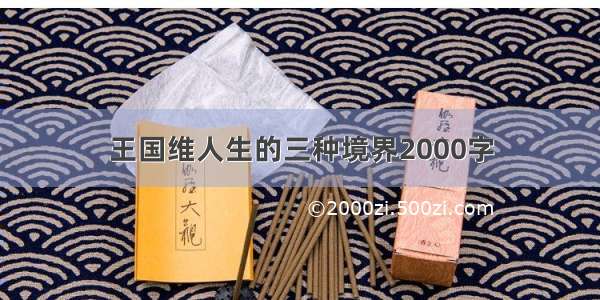
1、 TP、FP、TN、FN 概念
在对数据进行预测的时候,往往有以下几个概念:TP、FP、TN、FN。
什么意思呢?即预测情况(Positive or Negtive)是否真正反应真实情况的关系:
看下面这解析你就懂了!
TP:True Positive,预测的是正样本,且正确预测。
FP:False Positive,预测的是正样本,但错误预测。即误检
TN:True Negative,预测的是负样本,且正确预测。
FN:False Negative,预测的是负样本,但错误预测。即漏检
扩展:
TP+FN:正样本的总和,正确检测正样本 + 漏检数。
FP+TN:负样本的总和,正确检测负样本 + 误检数。
TP+TN:正确分类总和,正确检测正样本 + 正确检测负样本
Accuracy:准确率,即预测的准确程度,
Accuracy = (TP + TN) / (TP + FP + TN +FN)
即正确预测数 / 样本总数。但是Accuracy 不经常使用,因为我们在做目标预测的时候往往只关心正样本,而不去关心负样本是否正确预测。
2、 目标框检测准确率、召回率
目标检测输出框为预测框,预测框中有正确检测(TP)和误检(FP),以及漏检(FN)
1、Percision: 准确率, 所有预测样本中,准确预测的概率。因为只预测正样本,所有认为预测到的样本均为Positive。
Percision = TP / (TP + FP)
2、Recall: 召回率, 所有正真实正样本中,被正确预测的概率。
Recall = TP / (TP + FN)
那目标检测中怎么才算正确预测呢?一般用 IOU 进行匹配,预测框和真实框之间的 IOU 值大于一定阈值时,比如0.5,则认为对真实样本正确预测。
既然有了准召率,为什么还要AP呢?
2、 AP、MAP
假设我们对某一个类别(比如 person)预测,每一个预测box都有一个置信度score 和 和label是否正确。 按score排序后有如下:
AP:Average Precision
假设有M个真值正样本,我们从Top-1 到 Top-N,每累积一个预测就会对应一个recall 和 一个 precision。从Top-1 到 Top-N后可以有M个recall值。分别为(1/M,2/M,…,M/M),对每一个recall,从对应的precision 中取最大值作为当前recall 对应的precision,求M 个precision的平均得到AP。
AP表示训练出来的模型在当前类别上的好坏。
mAP : mean AP
将所有类别的AP求平均即可。
3、 P-R曲线的绘制
想要计算AP,必须先得绘制P-R 曲线。
1、描点法绘制Precision-Recall图
2、所有点插值法(interpolation performed in all points)
经过插值后,M 个矩形面积即为AP值。
原始AP定义为:
实际上我们都是用矩形插值方式进行近似计算。
代码如下:
import osimport numpy as npimport jsonimport cv2 as cvdef xyhw2xyxy(xyhw):x1 = xyhw[0] - xyhw[2] / 2y1 = xyhw[1] - xyhw[3] / 2x2 = xyhw[0] + xyhw[2] / 2y2 = xyhw[1] + xyhw[3] / 2return [x1, y1, x2, y2]def load_pt(json_file):# load pt from json files,# get N x 6, 0:4 bbox, 4:conf 5:classcontent = json.load(open(json_file, 'r', encoding="utf-8"))if content is None:return Nonetarges = content['targets']tar_len = len(targes)targets_pt = []for i in range(tar_len):# print(targes[i])classid = []conf = []conf.append(targes[i]['conf'])classid.append(targes[i]['classid'])x1y1x2y2 = xyhw2xyxy(targes[i]['rect'])targets_pt.append(x1y1x2y2 + conf + classid)return np.array(targets_pt)def load_gt(txt_file, H, W):# load gt from txt files, yolo format,# get N x 5, 0: label 1:5 bboxf = open(txt_file)lines = f.readlines()targets = []for line in lines:contents = line.strip(" ").strip("\n").split(" ")contents = [float(x) for x in contents]# print(contents)class_id = contents[0]cx = contents[1] * Wcy = contents[2] * Hpw = contents[3] * Wph = contents[4] * Hx1y1x2y2 = xyhw2xyxy([cx, cy, pw, ph])targets.append([class_id, x1y1x2y2[0], x1y1x2y2[1], x1y1x2y2[2], x1y1x2y2[3]])return np.array(targets)def calc_iou(bbox1, bbox2):if not isinstance(bbox1, np.ndarray):bbox1 = np.array(bbox1)if not isinstance(bbox2, np.ndarray):bbox2 = np.array(bbox2)xmin1, ymin1, xmax1, ymax1, = np.split(bbox1, 4, axis=-1)xmin2, ymin2, xmax2, ymax2, = np.split(bbox2, 4, axis=-1)area1 = (xmax1 - xmin1) * (ymax1 - ymin1)area2 = (xmax2 - xmin2) * (ymax2 - ymin2)ymin = np.maximum(ymin1, np.squeeze(ymin2, axis=-1))xmin = np.maximum(xmin1, np.squeeze(xmin2, axis=-1))ymax = np.minimum(ymax1, np.squeeze(ymax2, axis=-1))xmax = np.minimum(xmax1, np.squeeze(xmax2, axis=-1))h = np.maximum(ymax - ymin, 0)w = np.maximum(xmax - xmin, 0)intersect = h * wunion = area1 + np.squeeze(area2, axis=-1) - intersectreturn intersect / uniondef ap_per_class(tp, conf, pred_cls, target_cls, plot=False, save_dir='.', names=()):# Sort by objectnessi = np.argsort(-conf)tp, conf, pred_cls = tp[i], conf[i], pred_cls[i]# Find unique classesunique_classes = np.unique(target_cls)nc = unique_classes.shape[0] # number of classes, number of detections# Create Precision-Recall curve and compute AP for each classpx, py = np.linspace(0, 1, 1000), [] # for plottingap, p, r = np.zeros((nc, tp.shape[1])), np.zeros((nc, 1000)), np.zeros((nc, 1000))for ci, c in enumerate(unique_classes):i = pred_cls == c# print(" pred_cls = ", pred_cls)n_l = (target_cls == c).sum() # number of labelsn_p = i.sum() # number of predictionsif n_p == 0 or n_l == 0:continueelse:# Accumulate FPs and TPsfpc = (1 - tp[i]).cumsum(0)tpc = tp[i].cumsum(0)# Recallrecall = tpc / (n_l + 1e-16) # recall curve# print(" recall = ", recall)r[ci] = np.interp(-px, -conf[i], recall[:, 0], left=0) # negative x, xp because xp decreases# Precisionprecision = tpc / (tpc + fpc) # precision curvep[ci] = np.interp(-px, -conf[i], precision[:, 0], left=1) # p at pr_score# AP from recall-precision curvefor j in range(tp.shape[1]):ap[ci, j], mpre, mrec = compute_ap(recall[:, j], precision[:, j])if plot and j == 0:py.append(np.interp(px, mrec, mpre)) # precision at mAP@0.5# Compute F1 (harmonic mean of precision and recall)f1 = 2 * p * r / (p + r + 1e-16)i = f1.mean(0).argmax() # max F1 indexreturn p[:, i], r[:, i], ap, f1[:, i], unique_classes.astype('int32')def compute_ap(recall, precision):# Append sentinel values to beginning and endmrec = np.concatenate(([0.], recall, [recall[-1] + 0.01]))mpre = np.concatenate(([1.], precision, [0.]))# Compute the precision envelopempre = np.flip(np.maximum.accumulate(np.flip(mpre)))# Integrate area under curvemethod = 'interp' # methods: 'continuous', 'interp'if method == 'interp':x = np.linspace(0, 1, 101) # 101-point interp (COCO)ap = np.trapz(np.interp(x, mrec, mpre), x) # integrateelse: # 'continuous'i = np.where(mrec[1:] != mrec[:-1])[0] # points where x axis (recall) changesap = np.sum((mrec[i + 1] - mrec[i]) * mpre[i + 1]) # area under curvereturn ap, mpre, mrec## 评测一张图片def value_one(pts, gts):iouv = np.linspace(0.5, 0.95, 10) # iou vector for mAP@0.5:0.95niou = iouv.shape[0]correct = np.zeros((pts.shape[0], niou), dtype=np.bool)nl = len(gts)tcls_tensor = gts[:, 0]tcls = gts[:, 0].tolist() if nl else [] # target classfor cls in np.unique(tcls_tensor):ti = (cls == (gts[:, 0]).astype(np.uint8)).nonzero()[0] # prediction indicespi = (cls == (pts[:, 5]).astype(np.uint8)).nonzero()[0] # target indicesif len(pi > 0):IOUS = calc_iou(pts[pi, :4], gts[ti, 1:5])ious = IOUS.max(1)iid = IOUS.argmax(1)detected = []detected_set = set()for j in ((ious > iouv[0]).nonzero()[0]):d = ti[iid[j]]if d.item() not in detected_set:detected_set.add(d.item())detected.append(d)correct[pi[j]] = ious[j] > iouv # iou_thres is 1xnif len(detected) == nl: # all targets already located in imagebreakreturn correct, pts[:, 4], pts[:, 5], tclsif __name__ == "__main__":img_dir = "../images/"predict_dir = "../jsons/"target_dir = "../labels/"img_H = 540img_W = 960colors = {0: (255, 0, 0), 1: (0, 255, 0), 2: (0, 0, 255), 3: (255, 255, 0),4: (255, 0, 255), 5: (0, 255, 255), 6: (255, 255, 255)}types = {0: 'person', 1: 'bike', 2: 'car', 3: 'motor', 4: 'bus', 5: 'truck'}predict_list = os.listdir(predict_dir)jdict, stats, ap, ap_class, wandb_images = [], [], [], [], []n = 0# value all imagesfor predict_name in predict_list:predict_path = os.path.join(predict_dir, predict_name)target_path = os.path.join(target_dir, predict_name).replace(".json", ".txt")if not os.path.exists(target_path):print("error : ", target_path)continuepts = load_pt(predict_path) # 加载predictif pts is None:continuegts = load_gt(target_path, img_H, img_W) # 加载targetif gts.shape[0] == 0:continue# img_path = os.path.join(img_dir, predict_name).replace(".json", ".jpg")# img = cv.imread(img_path)# for pt in pts:#type1 = int(pt[5])##图片, 左上角, 右下角, 颜色, 线条粗细, 线条类型,点类型#cv.rectangle(img, (int(pt[0]), int(pt[1])), (int(pt[2]),int(pt[3])), colors[type1], 1, 4, 0)# for gt in gts:#type2 = int(gt[0])##cv.rectangle(img, (int(gt[0]), int(gt[1])), (int(gt[2]), int(gt[3])), colors[type2], 1, 4, 0)# cv.imshow("img", img)# cv.waitKey(0)# Append statistics (correct, conf, pcls, tcls)correct, conf, pcls, tcls = value_one(pts, gts) # value onestats.append((correct, conf, pcls, tcls)) # add value one resultn += 1#### after load all images ####print(" n = ", n)stats = [np.concatenate(x, 0) for x in zip(*stats)] # to numpyif len(stats) and stats[0].any():print(" res : ")p, r, ap, f1, ap_class = ap_per_class(*stats, plot=False, save_dir="./", names="hello")print("p = ", p)print("r = ", r)print("ap = ", ap)ap50, ap = ap[:, 0], ap.mean(1) # AP@0.5, AP@0.5:0.95mp, mr, map50, map = p.mean(), r.mean(), ap50.mean(), ap.mean()print("mp = ", mp)print("mr = ", mr)print("map50 = ", map50)print("map = ", map)
















